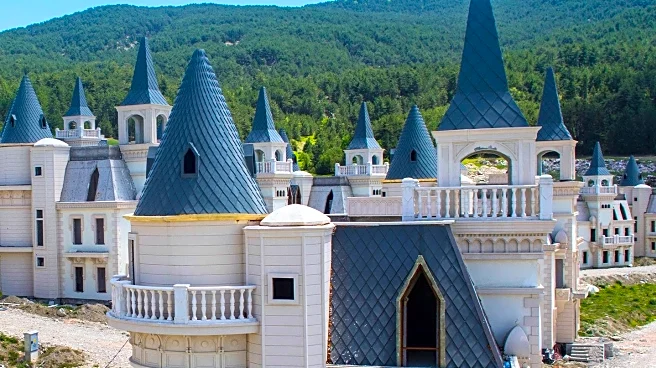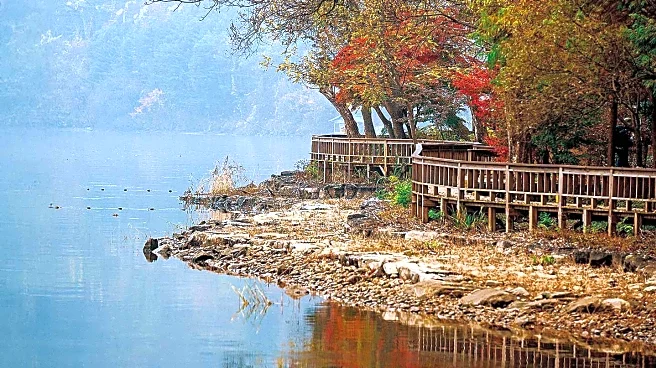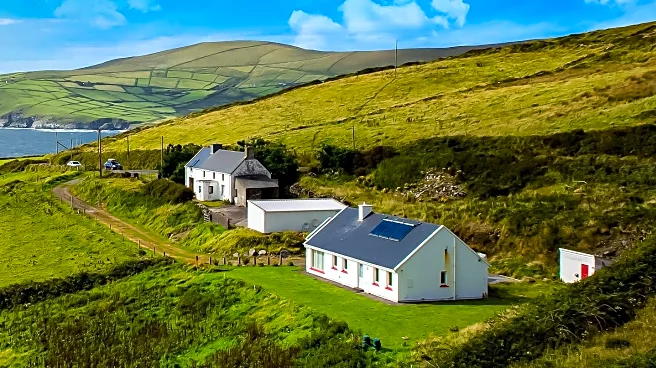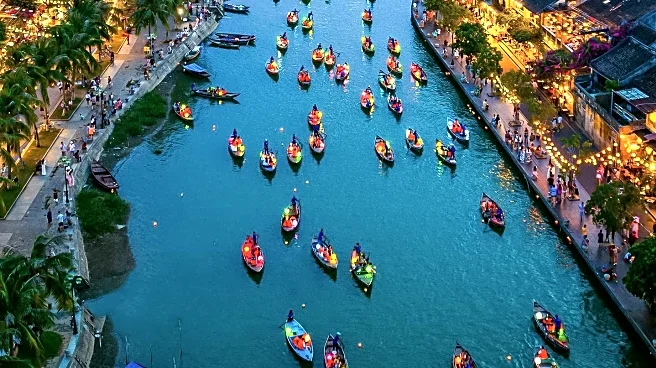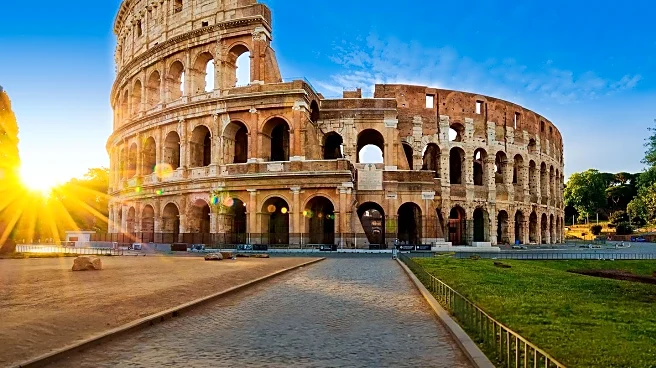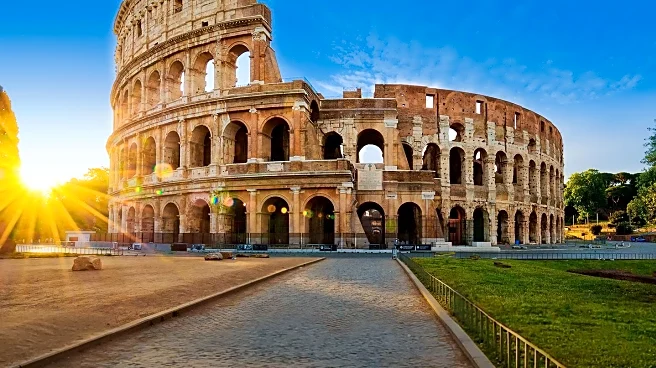What's Happening?
Vogue has published an article featuring 11 haunted castles around the world, offering spine-tingling supernatural encounters for Halloween enthusiasts. The article includes Leap Castle in Ireland, known for its ghostly stories and historical significance. The castle, built by the O’Bannon clan in the early 1500s, has a history of conflict and bloodshed. It is currently undergoing restoration by the Ryan family, who open it to visitors interested in its haunted history. Other castles featured include Edinburgh Castle in Scotland and the Tower of London in England, each with their own unique ghostly tales and historical backgrounds.
Why It's Important?
The article taps into the growing interest in dark tourism, where travelers seek out destinations with historical and supernatural significance. This trend reflects a broader cultural fascination with the paranormal and the desire to explore places with rich, albeit eerie, histories. By highlighting these haunted castles, Vogue caters to a niche market of travelers looking for unique experiences, potentially boosting tourism in these areas. The focus on restoration efforts also underscores the importance of preserving historical sites, even those with dark pasts, for future generations.
What's Next?
As interest in dark tourism continues to grow, more historical sites may capitalize on their haunted reputations to attract visitors. This could lead to increased investment in the restoration and preservation of such sites, ensuring their stories and cultural significance are maintained. Additionally, tourism operators may develop specialized tours and experiences to cater to this market, offering immersive and educational experiences that delve into the history and legends of these locations.
Beyond the Headlines
The fascination with haunted castles and dark tourism raises ethical questions about exploiting tragic histories for entertainment. It challenges society to consider how we engage with the past and the narratives we choose to highlight. This trend may also influence cultural perceptions of history, encouraging a more nuanced understanding of the events and people that shaped these sites.
